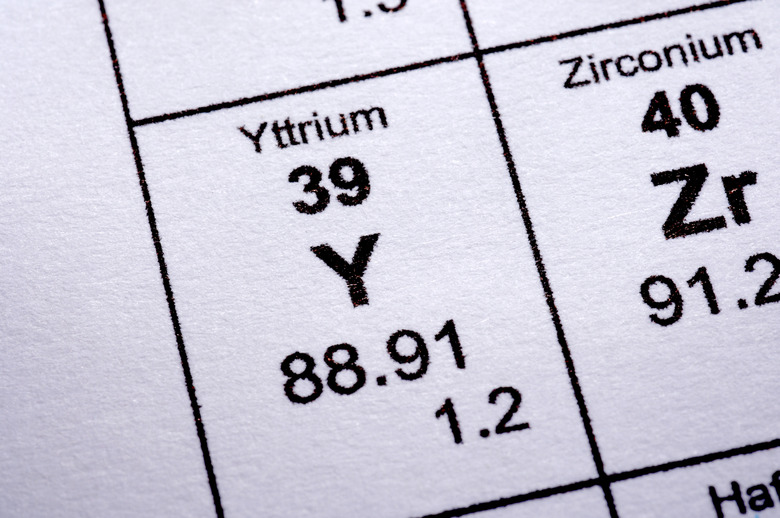What New Uses Are Being Found For Rare Earth Elements?
The rare earth elements include metals with unusual-sounding names such as neodymium, cerium, ytterbium and europium; many belong to the lanthanide series in the periodic table. The term "rare earth" is a misnomer as many rare earths are in fact fairly common. The physical and chemical properties of rare earths make them useful in medicine, consumer products, science and industry.
Strong Magnets
Strong Magnets
Alloys of iron and certain rare earth metals make extremely strong permanent magnets; these are very useful because tiny, lightweight magnets are necessary for the small, powerful electric motors in hybrid vehicles and the latest generation of portable drone flying machines. The rare earth neodymium is a popular choice for high-strength magnets; others include holmium and samarium. The secret to their magnetic properties lies in the arrangement of the electrons in the atoms of certain rare earth elements. In elements with weak magnetic properties such as sulfur, most of their outer electrons are grouped in pairs; those in these particular rare earth metals have unpaired electrons that increase their magnetic properties.
Light and Color
Light and Color
Chemical compounds made from rare earth elements have useful properties relating to color and light; for example, cerium sulfide combines cerium and sulfur to produce a red pigment that is used as a less-toxic alternative to traditional compounds based on the heavy metal cadmium. Europium, another rare earth, sees wide use in electronic displays to produce pixels of bright red light.
Electronic Components
Electronic Components
Rare earth elements play essential supporting roles in the manufacture of electronic components. Rechargeable batteries use compounds of nickel and lanthanum to maximize electrical energy storage efficiency. Specialized lenses made with lutetium are used in the making of high-density integrated circuits. Fiber-optic cables containing the rare earth erbium carry laser signals long distances.
Medical Uses
Medical Uses
Radioactive forms of the rare earth elements samarium and yttrium are used in compounds that fight cancer. The samarium-153 isotope emits beta radiation that kills off bone cancer cells and helps relieve pain. Yttrium-90, another radioactive element, is useful in the treatment of liver cancer.
References
Cite This Article
MLA
Papiewski, John. "What New Uses Are Being Found For Rare Earth Elements?" sciencing.com, https://www.sciencing.com/new-uses-being-found-rare-earth-elements-23513/. 24 April 2017.
APA
Papiewski, John. (2017, April 24). What New Uses Are Being Found For Rare Earth Elements?. sciencing.com. Retrieved from https://www.sciencing.com/new-uses-being-found-rare-earth-elements-23513/
Chicago
Papiewski, John. What New Uses Are Being Found For Rare Earth Elements? last modified March 24, 2022. https://www.sciencing.com/new-uses-being-found-rare-earth-elements-23513/
